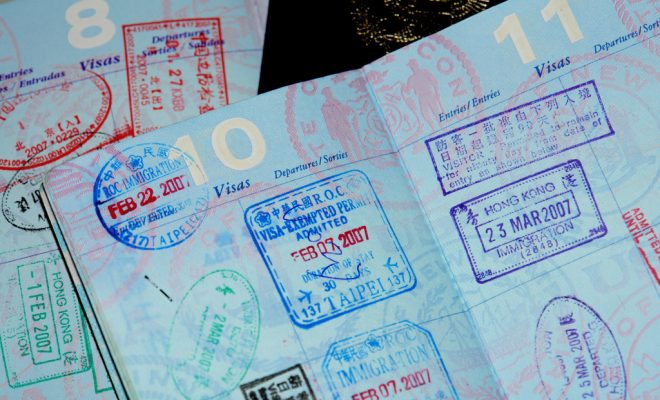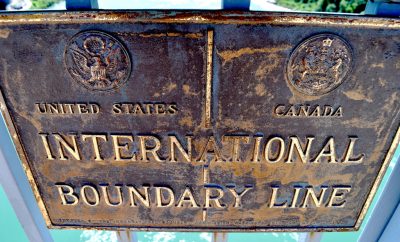 Image courtesy of J Aaron Farr; License: (CC BY 2.0)
Image courtesy of J Aaron Farr; License: (CC BY 2.0)
World
What is the Global Entry Program?
Between long security lines, picky customs agents, and all the other inconveniences that can come with air travel, seasoned travelers know that every minute can add up when flying. A relatively new program called “Global Entry,” which is run by U.S. Customs and Border Protection, is designed to help certain travelers receive expedited entry into the United States upon their arrival at certain airports. But what exactly is Global Entry, how does it work, and what changes can we expect to see moving forward? Read on to find out.
Who Qualifies for Global Entry?
Currently, U.S. citizens, U.S. permanent residents, Indian citizens, Colombian citizens, U.K. citizens, German citizens, Panamanian citizens, citizens of Singapore, South Korean citizens, Swiss citizens, and Mexican nationals can qualify for Global Entry. Canadian citizens can participate in the related NEXUS program, which gives them the same benefits as someone who obtains Global Entry.
But there are other requirements that need to be met in order to qualify someone for Global Entry, and there’s never any guarantee that a particular individual will receive it. For example, individuals who have been convicted of any criminal offense or currently have any pending criminal charges against them cannot qualify.
Children are eligible for Global Entry but must go through a process that is pretty much identical to the one for adults (more on that below). Everyone–regardless of age–needs their own Global Entry card. Children are not able to be included on their parents’ or guardians’ cards.
What Benefits Do You Get from Global Entry?
Essentially Global Entry is like a “fast pass” for customs when you’re flying internationally. Normally, when you arrive in the U.S. from an international destination, you have to go through the entire customs process, which includes disclosing certain information and (usually) waiting in line. But travelers who have Global Entry can just proceed straight to a kiosk and work through the process on their own. According to U.S. Customs and Border Protection:
At airports, program members proceed to Global Entry kiosks, present their machine-readable passport or U.S. permanent resident card, place their fingerprints on the scanner for fingerprint verification and complete a customs declaration. The kiosk issues the traveler a transaction receipt and directs the traveler to baggage claim and the exit.
That doesn’t necessarily guarantee that someone who has Global Entry will not need any further screening. But for the most part, it should seriously expedite a user’s customs process.
Domestically, having Global Entry qualifies you for TSA PreCheck. TSA PreCheck allows a holder to move quickly through the security process before boarding the plane. If you are a PreCheck holder you don’t have to remove your jacket, shoes, belt, or other accessories when going through a security checkpoint. You can leave items like laptops and appropriate-sized liquids in your carry on, and you have access to a PreCheck line that is usually shorter than the regular security line. TSA PreCheck can also be obtained separately, for those who want access to that program but don’t need Global Entry.
How Do You Get Global Entry?
So, you decide that you travel enough that applying for Global Entry is worth it for you. How do you actually obtain it? It’s a somewhat lengthy process. You start by completing an online form with identifying information. You have to list details about your residency and employment history for the past five years–which can prove complicated for some people, including recent college grads who may have moved around a lot during that time period. The application is incredibly important because an error–even a seemingly minor or innocent one–can lead to a rejection from the Global Entry program.
You have to pay a $100 fee to gain Global Entry–although many travel-focused credit cards now offer to reimburse that fee as part of some sort of perks program.
The next step, if your application isn’t rejected, is an in-person interview at an “enrollment center.” At various points in the Global Entry program’s history, applicants have seen pretty significant wait times, particularly for the interview portion. For example, an AP article from June 2016 detailed months-long wait times in some American cities. In cities like Los Angeles and San Fransisco, applicants may have to wait months for appointments, whereas in other cities with perhaps fewer international travelers, walk-in appointments may be available.
In fact, the overall time burden for Global Entry is a frequent topic of conversation on travel blogs. Many travel bloggers post entries like “How to Get a Quicker Global Entry Appointment!” and “How I Got Approved for Global Entry in 20 Days.”
The interview process involves going back over the information included in your application. It has been theorized that the interview is somewhat of a formality. According to Quartz writer Zachary M. Seward, “You may be asked a few basic questions about how you travel, your employment status, etc. But you wouldn’t have gotten this far in the process if you weren’t already destined for a rubber stamp.”
Once you have Global Entry, it lasts for five years.
Global Entry Controversies and Concerns
Is it Actually Worth It?
The biggest question usually asked about Global Entry is whether or not the program is actually worth it. It takes time and money to apply, so infrequent travelers might not actually get that many benefits out of it. Seth Kugel of the New York Times points out that Global Entry won’t save you that much time if your travel companions don’t also have Global Entry. While you won’t physically be stuck in the customs line, you’ll still have to wait for your travel partners, like friends, family, or colleagues to make it through the line. Additionally, membership in the program won’t help you get out of the airport any faster if you’ve checked a bag. And as Kugel himself reports, there’s always the chance that your Global Entry gets rejected for whatever reason, and then you get punted to the regular process.
Trump’s Travel Ban and Global Entry
When President Donald Trump issued the original iteration of his travel ban in January, there were significant concerns about what it could mean for travelers coming from the countries listed. While none of the countries named in either the first or second version of the travel ban are technically eligible for the program, there were questions for travelers who hold dual citizenship. For example, British-Iranian health care entrepreneur Ali Parsa, who runs a company called Babylon Health, spoke to Business Insider about his concerns. Parsa has a U.K. passport, as well as Global Entry, but was concerned about whether or not he could enter the U.S. under the travel ban, because he also has Iranian citizenship.
While that version of the travel ban didn’t end up going into effect, and a recent iteration is still working its way through the courts, the scare raised the question: is Global Entry worth it if the situation is so unstable?
Conclusion
If you’re a big time traveler, Global Entry might be something to consider. But the program, which is designed to speed up travel for its members, is not as perfect as it sounds. From long wait times to obtain the certification to questions about whether it’s actually worth it, applying for Global Entry requires some reflection. But for those who think it’s worth it, it could be a big boon next time they’re ready to head out of the airport as quickly as possible.








Comments